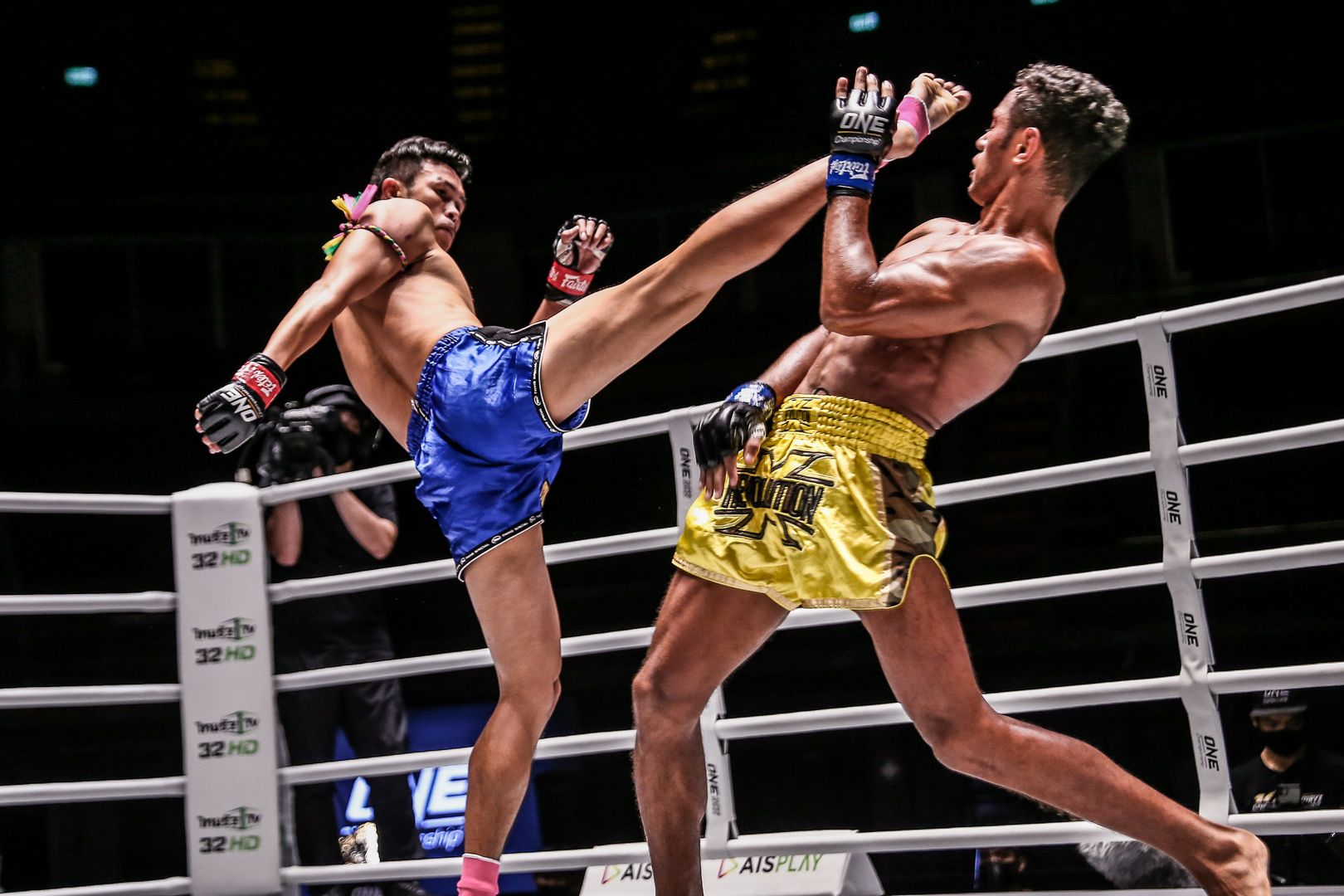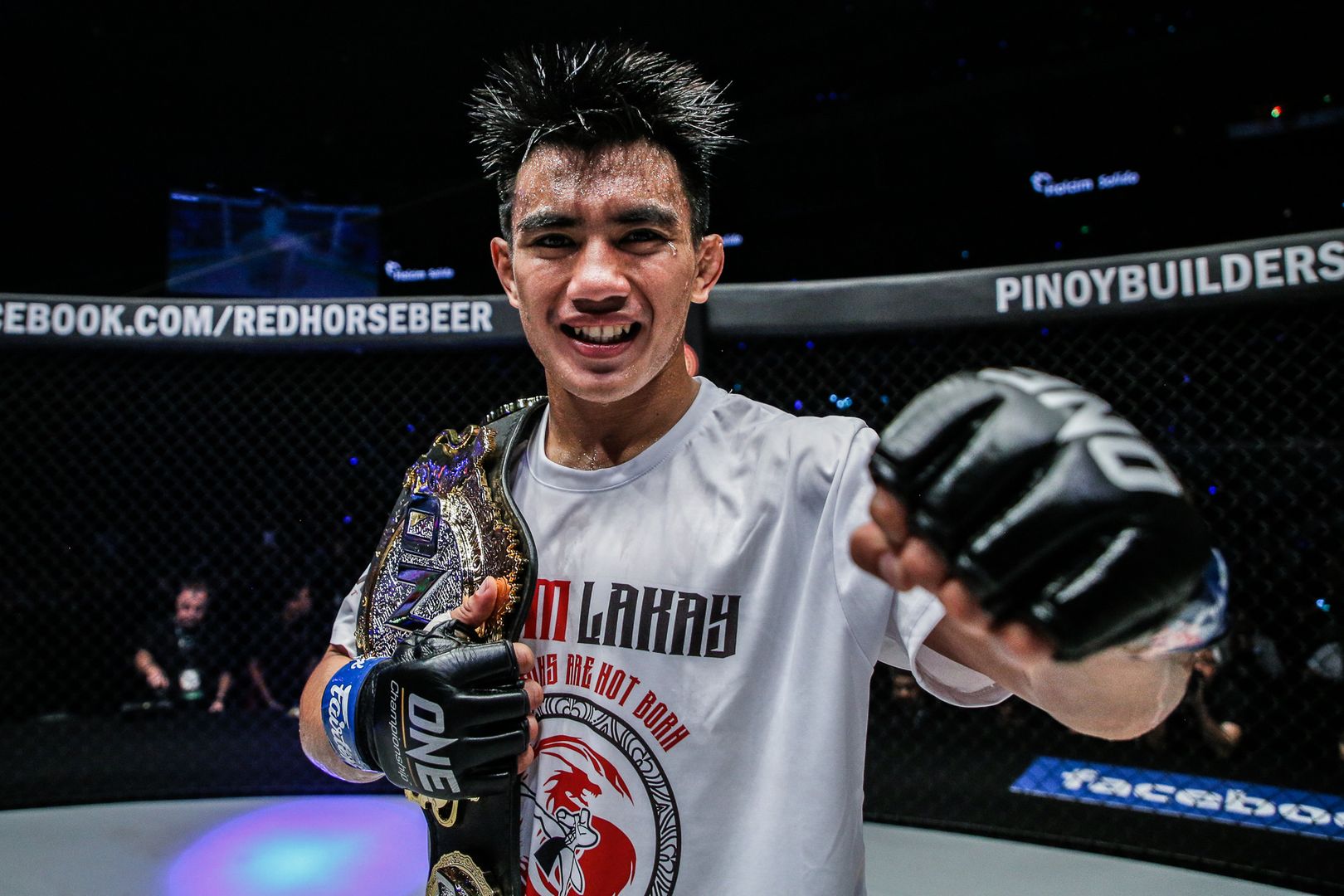Mastering The Muay Thai Stance For Beginners

The Muay Thai stance is one of the most important fundamentals to learn when you get started in the martial art.
Without knowing how to properly position yourself, you won’t be able to attack and defend, and you’ll find sparring more frustrating than fun. On top of that, you won’t be able to generate a lot of power on the pads or bag.
To help you build a solid foundation, here are some things to keep in mind as you practice your Muay Thai stance.
Orthodox And Southpaw Stances

In Muay Thai – like in Western boxing – athletes are either right-handed (orthodox) or left-handed (southpaw), which are also the names of the two stances.
Orthodox fighters stand with their left foot forward and generally have more power on their right side. Southpaw fighters, conversely, stand with their right foot forward and generate power from their left side.
As a bit of a side note, you can sometimes tell which side Muay Thai fighters favor by their anklets. Some fighters wear only one anklet on their power side, whereas others, like “The Boxing Computer” Yodsanklai IWE Fairtex, wear an odd-colored anklet compared to their shorts and opposite anklet.
Whether you’re orthodox or southpaw, there are a few general guidelines you should follow – starting with body positioning.
Foot Positioning

In theory, you generally want to keep your feet slightly wider than your shoulder width. In reality, however, you’ll notice top-level fighters, like ONE Bantamweight Muay Thai World Champion Nong-O Gaiyanghadao, varying up the distance between their feet.
With a wider stance, Nong-O can defend and absorb incoming kicks without being toppled because of the wider base. Other times, you’ll notice the World Champion positioning his feet closer together to throw teeps.
For now, work on keeping your feet a little more than shoulder-width apart. Plus, keep your knees slightly bent. Once you get comfortable with that, you can start varying up the distance.
Moreover – unlike with a boxing stance – you want your hips facing your opponent’s hips. You don’t want to stand sideways like a boxer.
Above all, the position of your feet is relative to the technique you’re trying to execute, and the same is true for your hands and arms.
Arm, Elbow, Hand, and Head Positioning

Some martial arts movies and video games have exaggerated the way Muay Thai fighters stand.
Many athletes are depicted with their arms and elbows way out to the sides of their bodies, while their hands are far in front of their heads. But that is not ideal positioning unless you fancy having your body turned into meatloaf.
Instead, bring your thumbs to your eyebrows (your palms should be facing each other; not facing your forehead) and let your arms hang down in a natural position. When executed properly, the distance between your elbows should be slightly wider than the distance between your hands.
However, it shouldn’t feel like you’re forcing your elbows outward or inward. Of course, there will be instances when you have to bring your arms to your body in order to defend, but those are the only times your elbows should be pinned to your body.
Your hands, as mentioned, should be brushing against your forehead, and your chin should be tucked just enough to where it would be protected by your shoulders if a hook comes from either side. The idea is to tilt your head toward your chest, but your chin shouldn’t be resting on your chest.
Once you have your stance and body positioning sorted out, it’s time to practice weight distribution.
Weight Distribution

In general, you want to keep your weight evenly distributed over both legs. If you lean too far forward, you’re going to be an easy target, especially for lead-leg low kicks because it will take much more time to move out of the way or lift your leg to check kicks.
On the other hand, if you put too much weight on your rear leg, it’ll be difficult to put any power behind your attacks, especially your punches, and you’ll be easy to knock off-balance.
The trick, then, is to know when to distribute your weight evenly, when to put your weight over your front leg, and when to put it over your rear foot. Of course, weight distribution all depends on the circumstances, so this will come with experience.
You’ll notice how two-sport World Champion Sam-A Gaiyanghadao keeps his weight on his rear leg when throwing lead-leg teeps. And you’ll also notice how Sam-A distributes his weight over his front leg when he throws a straight left.
Muay Thai Footwork

There will come a time when you feel comfortable using the basic Muay Thai stance and are ready to start incorporating footwork into your game. Keep in mind that footwork for Muay Thai and footwork for boxing are two separate arts.
Rarely do you see an athlete bouncing around on the balls of their feet or moving in and out of range quickly like in boxing. Footwork in Muay Thai is a bit different because of all the weapons available.
Whenever you advance forward, backward, or from side to side, you always want to maintain your general Muay Thai stance.
For example, when you move forward, avoid advancing with your rear leg first. Instead, step forward with your front foot and let your rear foot follow. When you retreat, move your rear leg first. Also, when moving to either side, take the first step with the foot on the side you’re moving to.
With that said, you’ll also see experienced fighters using more advanced footwork, like pivoting on the front foot to rotate out of the way of a kick and then counter, similar to what “The Kicking Machine” Superlek Kiatmoo9 did to defeat “The Angel Warrior” Panpayak Jitmuangnon.
Read more: 10 Inspirational Martial Arts Quotes From ONE Superstars



















